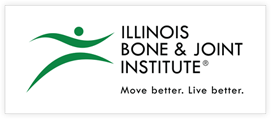Biceps Tenodesis Surgery
Biceps tenodesis is a common surgical procedure performed to repair damage to the long head of the biceps tendon in the shoulder after a tear or inflammation of the tendon due to trauma, repetitive overuse, age-related degeneration, shoulder impingement and rotator cuff tears. The biceps tendon attaches the biceps muscle in the upper arm to the shoulder joint.
The primary goals of a biceps tenodesis are to alleviate pain, improve shoulder function, and restore cosmesis to the shoulder joint. The procedure achieves this goal by repositioning the long head of the biceps tendon to a more stable and less painful location in the upper arm.
The most common indication for surgical intervention is a biceps tendon tear that causes pain, weakness, and limits shoulder function. Biceps tendon injuries can occur due to acute injuries and degenerative changes over time.
- Superior Labrum Anterior to Posterior (SLAP) tears are injuries to the superior portion of the labrum, which is a ring of cartilage that surrounds the shoulder socket. In athletes, SLAP tears can occur due to repetitive overhead motions, such as throwing or weightlifting, or as a result of acute trauma. When a SLAP tear causes persistent symptoms, biceps tenodesis may be considered as part of the SLAP tear treatment.
- Biceps tendonitis is chronic inflammation or degeneration of the biceps tendon that can result in persistent pain and limited mobility. If conservative treatments such as rest, physical therapy, and medication have not improved the symptoms, biceps tenodesis may be recommended.
- If the biceps tendon repeatedly dislocates from its normal position within the shoulder joint, it can cause pain and instability. Biceps tenodesis can stabilize the tendon by relocating it to a more secure position an reduce the risk of recurrent tears and instability.
- Failed Conservative Treatment: If non-surgical treatments such as physical therapy, activity modification, anti-inflammatory medications, and injections have been unsuccessful in relieving pain and restoring shoulder function, biceps tenodesis may be recommended.
The surgery is performed under general anesthesia. Dr. Ronak Patel typically performs a biceps tenodesis as minimally invasive arthroscopic surgery.
Dr. Patel has extensive training and experience in arthroscopic surgery for rotator cuff tears, labral tears, including SLAP tears and biceps tendonitis. His research in treating shoulder instability has helped surgeons internationally to better treat bone loss in patient with chronic instability.
During an arthroscopic biceps tenodesis procedure, Illinois Orthopedic surgeon Dr. Ronak Patel will make small incisions and insert an arthroscope into the joint. This allows him to confirm a tear and evaluate damage to all parts of the shoulder including the rotator cuff.
He will detach the long head of the biceps tendon from its original attachment point in the shoulder socket and reattach it to a different location on the humerus bone (upper arm bone).
The new attachment site is typically a more stable and less painful location. This relocation of the biceps tendon helps alleviate pain, reduce irritation and inflammation, reduces the risk of further tendon damage, and restores shoulder function.
Before surgery the patient will receive complete postoperative instructions for recovery that may include wearing a sling and participating in physical therapy to restore strength and motion. It is important to follow Dr. Patel’s instructions to ensure a healthy recovery.
Full recovery after biceps tenodesis can take several months. The timeline can vary depending on any additional procedures performed, but most patients can expect to see significant improvement within 3 months. It’s important to note that the speed and extent of recovery can depend on factors such as age, overall health, adherence to rehabilitation protocols, and individual healing abilities.
Dr. Ronak M. Patel is a double board-certified orthopaedic surgeon and sports medicine physician. He completed his bachelor’s degree, medical degree, and residency training at Northwestern University. He, then completed his fellowship training at the Cleveland Clinic. He specializes in the treatment of complex knee, shoulder and elbow injuries and degenerative conditions. Contact him to schedule a consultation to learn more about how he can help you return to the life you love and the activities that make life worth living. He serves teens and adults in Chicagoland and NW Indiana.
At a Glance
Ronak M. Patel M.D.
- Double Board-Certified, Fellowship-Trained Orthopaedic Surgeon
- Past Team Physician to the Cavaliers (NBA), Browns (NFL) and Guardians (MLB)
- Published over 49 publications and 10 book chapters
- Learn more

